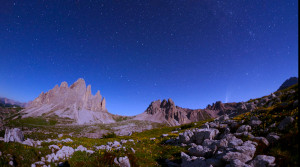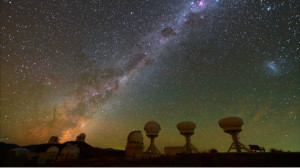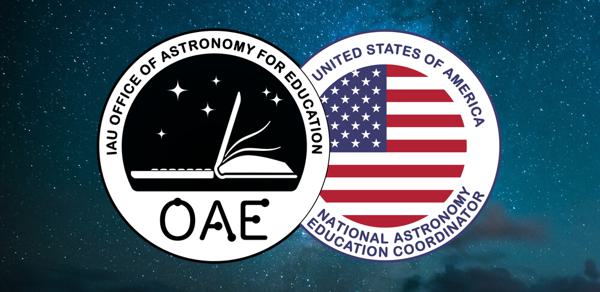Glossary term: 天空
Description: 當我們站在戶外,向地平線之上看去,視線又不受地球上任何建築物阻擋時,就能看到天空。地平線是我們所能看到的地球和地球上建築物的邊界。在夜晚晴朗的天空中,我們可以看到遙遠的行星、恆星,甚至一些星系(北半球的仙女座星系和南半球的麥哲倫雲)。星點的閃爍證明我們仍在透過地球大氣層的氣體觀察天體。白天,被空氣分子散射的陽光使天空呈現出藍色,遮擋了我們觀察宇宙深處的視線。遮住天空的雲或霧也會讓我們無法觀測到任何天體。
Related Terms:
See this term in other languages
Term and definition status: The original definition of this term in English have been approved by a research astronomer and a teacher The translation of this term and its definition is still awaiting approval
This is an automated transliteration of the simplified Chinese translation of this term
The OAE Multilingual Glossary is a project of the IAU Office of Astronomy for Education (OAE) in collaboration with the IAU Office of Astronomy Outreach (OAO). The terms and definitions were chosen, written and reviewed by a collective effort from the OAE, the OAE Centers and Nodes, the OAE National Astronomy Education Coordinators (NAECs) and other volunteers. You can find a full list of credits here. All glossary terms and their definitions are released under a Creative Commons CC BY-4.0 license and should be credited to "IAU OAE".
If you notice a factual or translation error in this glossary term or definition then please get in touch.
Related Media
箭袋樹上空的銀河
Credit: 戴建峰/國際天文學聯合會教育辦公室 (CC BY 4.0)
License: CC-BY-4.0 Creative Commons 姓名標示 4.0 國際 (CC BY 4.0) icons
橫亙 H.E.S.S 天文臺上空的銀河
Credit: Jianfeng Dai/IAU OAE (CC BY 4.0)
License: CC-BY-4.0 Creative Commons 姓名標示 4.0 國際 (CC BY 4.0) icons
北斗七星和新智彗星 C2020 F3
Credit: 喬爾賈·霍弗/國際天文學聯合會教育辦公室 (CC BY 4.0)
License: CC-BY-4.0 Creative Commons 姓名標示 4.0 國際 (CC BY 4.0) icons
拉西亞的南天
Credit: José Rodrigues/IAU OAE (CC BY 4.0)
License: CC-BY-4.0 Creative Commons 姓名標示 4.0 國際 (CC BY 4.0) icons












